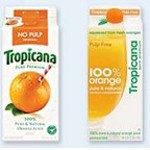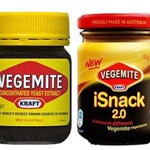Adrian Collins explains why some brands’ designs enjoy longevity and others fade into obscurity.
When, back in 2000, we designed the MiniCheddars packaging, we had little idea that it would be such an enduring design. Where other food brands have allowed their brand equity to dissipate in an ongoing process of design and redesign, MiniCheddars has barely changed at all.
It remains the same bright, recognisable, appealing package that it was 15 years ago. And that has produced rewards for owners McVities, who have enjoyed ongoing sales success with the product. It has diversified flavours but kept the packaging consistent, and it has remained a consistent performer with little or no advertising support..
How many food brands can make the same claim? Think of a product, and then try to remember how it looked 15 years ago. Almost certainly it will have been through so many evolutions – or even complete overhauls – that the packaging it wore at the start of this century is almost unrecognisable from that it currently uses – just 15 years later.
Tinkering disasters
Consider some famous examples. The most notorious is of course Coca-Cola’s 1985 attempt to rebrand Coca-Cola Classic as New Coke. More recently, in 2009 PepsiCo tried to overhaul an established design of Tropicana, phasing out the well-known orange with a straw in it. After a month of complaints and a 20 per cent drop in sales, PepsiCo announced that it would bring the old carton back. It was a mistake that was reputed to have cost $100m.
In the snacks world, also in 2009, Kraft held a competition to rename Australian icon Vegemite. The resulting name – iSnack 2.0 – was nothing if not a surprise, but what was more even more remarkable was that Kraft agreed to go through with the change. It lasted a full five days.
Causes of the tinkering
Why does this happen? The first reason, and most important, is that packaging matters. It is the opportunity a brand has to make a connection with a consumer at the point of purchase. Poor products with great packaging can succeed and great products with poor packaging can succeed.
However, it can be too easy to do. A brand manager knows he or she will be in post for two to three years. They want to make their mark in that time, and there are few levers at their disposal that are as quick, affordable, and often effective as packaging design. We can cite a long list of brands that have spent £100,000 with us and seen a profit surge in the millions of pounds. What brand manager does not want that on their CV?
It should be noted that this enthusiasm for packaging evolution and revolution is by no means confined to those brand managers. Branding and design consultancies have a significant vested interest in persuading their clients that the design they did two years ago would benefit from an update.
Designing for brand longevity
It is far better to develop a look and feel that looks fresh and contemporary from the outset and, crucially, remains so for many years. Take Copella. When we began working with Copella in 2004 it was a £5m brand looking for an enduring packaging design that would take its sales to the next level and help it establish its place in the PepsiCo stable.
We placed a solid block of distinctive green across the centre of every Copella bottle. Not only does the strong presence of a distinctive brand signifier help it to get noticed and tried, once consumers have tried and loved the product they can easily find it again. Having located the brand it is then relatively simple to shop within the brand for the specific variant.
Today, Copella turns over more than £40m a year; it has never advertised on television. Crucially, Copella has one of the highest repeat purchase rates of any product in the PepsiCo range.
Clearly, brand longevity is about more than avoiding disaster. By creating a brand that endures, FMCG products can reduce consultancy spend, build long-term brand recognition and awareness, protect margins, and achieve astonishing return on investment in branding and design services.
Adrian Collins is MD, Ziggurat Brands – an identity and innovation consultancy.






Leave your thoughts